In May 1615 a small VOC-fleet under command of Adriaan van der Dussen and Pieter van den Broecke visited the island of Ay. The island, a source of nutmeg, was occupied without losses. A few days later, however, the local population decided to resist the invaders and the VOC had to withdraw from the island, having incurred heavy losses. In April 1616 Van der Dussen returned and the island was occupied again. The population had to submit themselves to the VOC. Those who refused were forced from their stronghold in the north onto a high cliff where many jumped to their death in the sea below. On the ruins of the local fort the VOC would construct a new fortification : Revengie (revenge), a pentagonal fort with five corner bastions. Though the Heren XVII protested the construction of yet another fort in the Moluccas, the Council of the Indies calmly ignored this protest and the fort was completed. In 1683 the fort was heavily damaged by an earthquake, but restored. In the eighteenth century, the fort was used as a prison for high company officials and other prisoners of high rank. It was again restored in 1753 and would remain in use until the end of the eighteenth century. A notable feature of the fort are many rain-water cisterns built in the curtain wall and underneath the terreplein. The fort had a good supply of fresh water due to the sophisticated filtration and catchment system.
Images
-
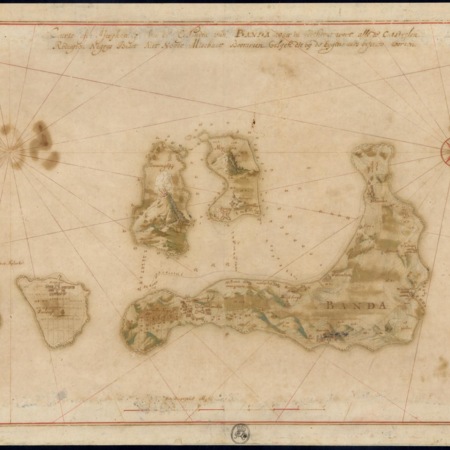
Map of the Banda Islands
Vingboons, Johannes
-
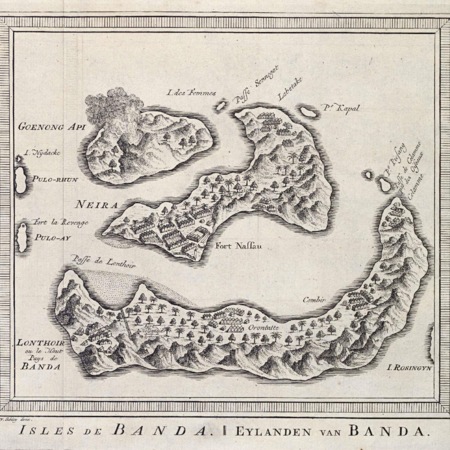
Map of the Banda islands
Schley, Jacobus van der / Hondt, Pierre d'
-
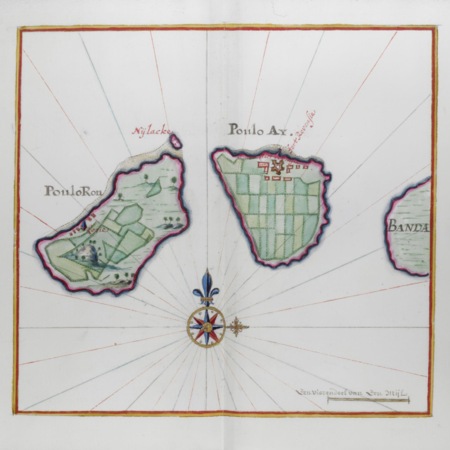
Map of Poulo Ron, Poulo Ay and a part of the Lonthor coast
Vingboons, Johannes
-
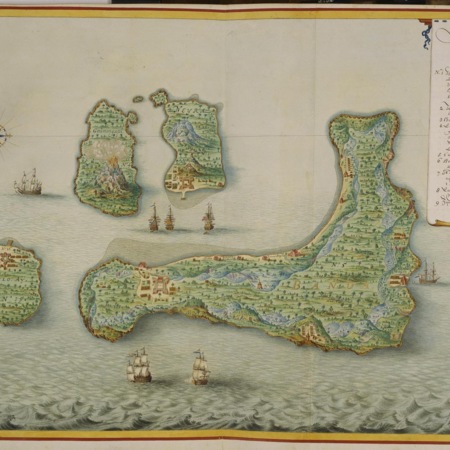
Map of the Banda islands
Vingboons, Johannes
-
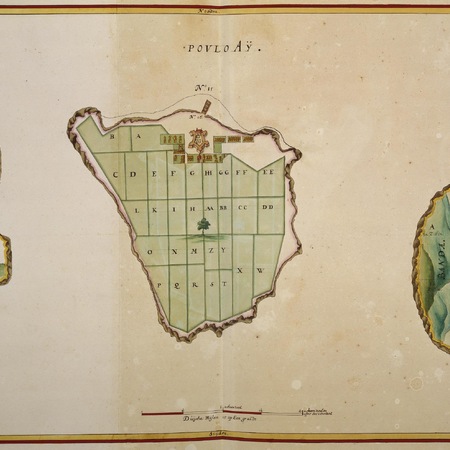
Map of the island of Poulo Aij
Vingboons, Johannes
-

Map of the Banda islands
Reimer, Carl Friedrich
-
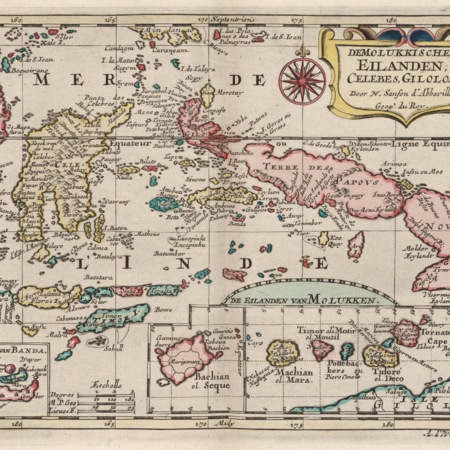
Map of the Moluccas
Winter, A. d' / Sanson d'Abbeville, Nicolas / ...
-
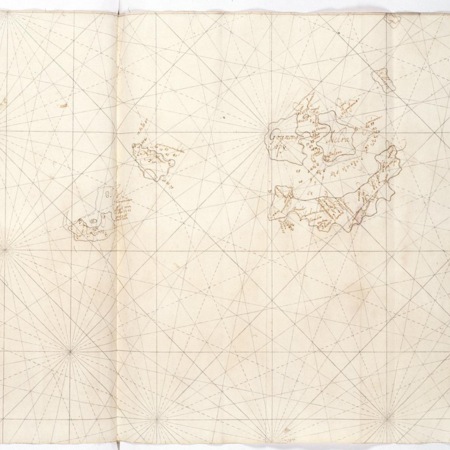
Map of the Banda islands
Anoniem / Anonymous
-
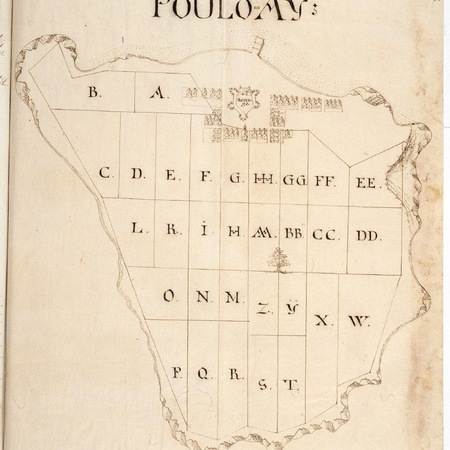
Map of the island of Poulo-Ay
Anoniem / Anonymous
-
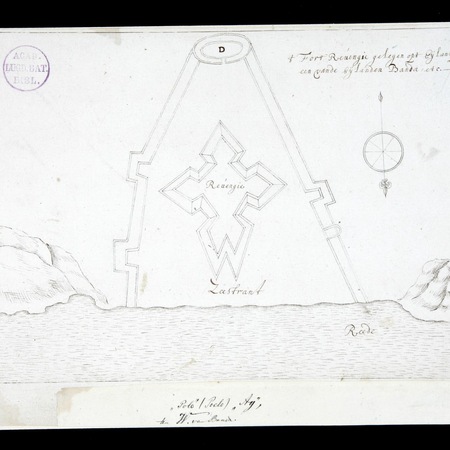
Map of Fort Revenge on Poelo Ai
Anoniem / Anonymous
-
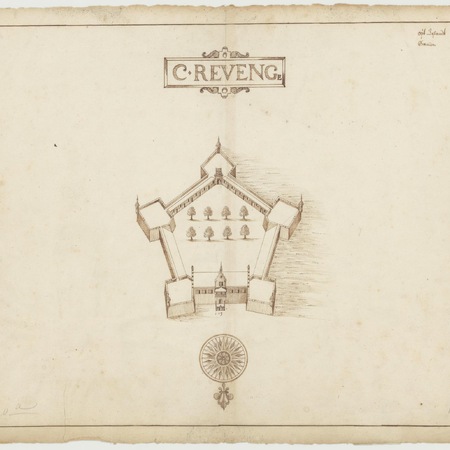
Bird's eye map of the fort Revenge
Anoniem / Anonymous
-
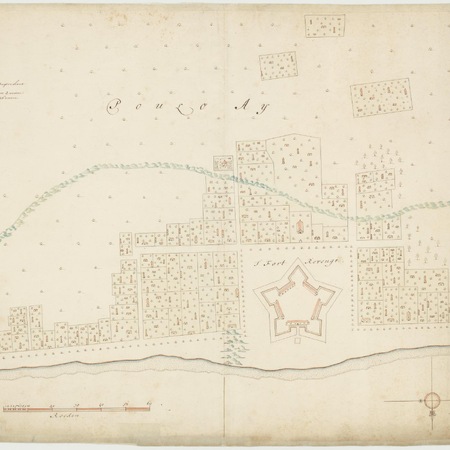
Map of the island of Ai, showing Fort Revenge
Graaff, Isaac de
-
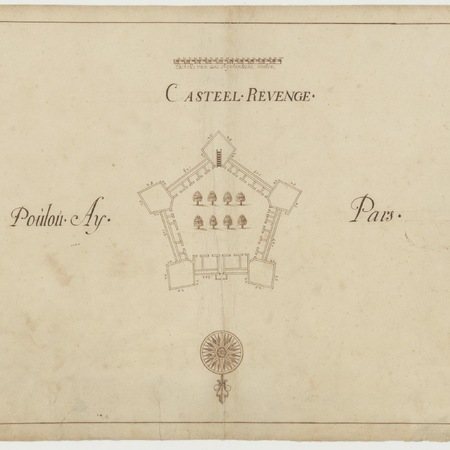
Map of Fort Revenge
Anoniem / Anonymous
-
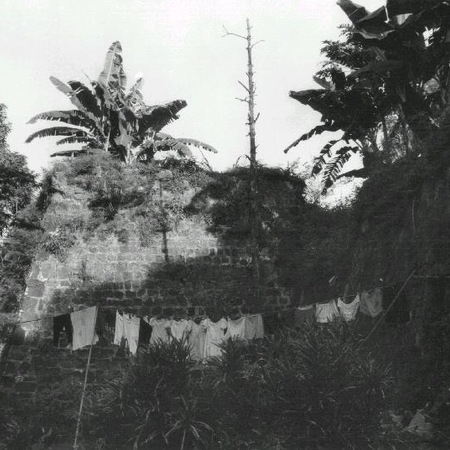
Fort Revenge on Pulau Ai
Deys, H.P.
-
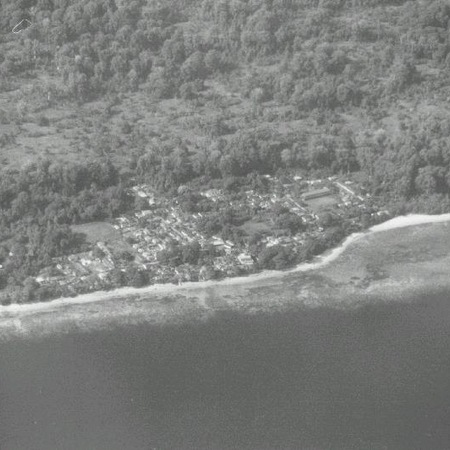
Aerial view of Pulau Ai
Deys, H.P.